|
How then will they call on him in whom they have not believed? And how are they to believe in him of whom they have never heard? And how are they to hear without someone preaching? And how are they to preach unless they are sent? As it is written, “How beautiful are the feet of those who preach the good news!” Rom. 10:14-15
These famous words from St. Paul describe the chain by which grace from God gets to the individual Christian. That chain includes faith, the Word, preaching, and the congregation and wider Christian community. How will someone in the future be a faithful Christian? Because God will reach them through congregations that gather around preaching and teaching of the Word and send people around the world and across the generations to perpetuate it. For a couple of years here at St. Paul’s we have been focused on the next generation. Will today’s little children grow up to learn the faith and pass it along? Forty years from now, will today’s six year olds be bringing their own children to church, teaching them the faith at home, and also educating them in the Word in a Christian school? Who can say? But we can apply the same kind of chain reasoning to that question. Today’s six year olds will not mature in the Word if they cannot read. And they won’t learn to read without teachers and books. And there won’t be any Christian teachers or classrooms if the Christian community doesn’t raise them up and equip them. We can’t guarantee that anyone will believe the Word they are taught, but we can guarantee that they won’t believe it if they aren’t taught it. Today we’re getting ready for another school year that starts on August 18. Covid, of course, has forced our faculty and staff to make major changes to our schedule and procedures, but through the faithful work of many people, most notably our principal Barb Mertens, who has followed all the guidelines and mandates closely and found ways to allow for safe, in-person school. We’re also dealing with some other changes. Our resource teacher, Mary Beth Hutcheson, and our 1stgrade teacher, Cathi Hansen, have retired. We’ll be recognizing and giving thanks for their many years of faithful service in church on August 16 when we rededicate the teachers for another school year. Due to all the craziness this summer, at school and in people’s personal lives, we had less time than we normally have to plan the transition to new teachers. Thankfully, we have trained, experienced people in the St. Paul’s community who were ready, willing, and able to step in. Lisa Smith will be our resource teacher, and Zina Bachert will be our 1st grade teacher, and everyone is pulling together to make it a great year. One of the last pieces of the puzzle is equipping the 1st grade classroom. We need the books and décor to make it a great learning environment. Yes, we have desks and chairs and text books. But we need the whole panoply of young reader books that learners need in order to excel. How can they read if they have not learned? How can they learn if they have no books? God has given us the teachers, the classroom, and the students. Let’s do all we can to make that gift likely to blossom forty years from now into yet another generation of faithful Christians. If you are in a position to donate first grade level books in good condition or donate toward the purchase of books, posters, and classroom materials, please do so. Just mark the checks as for that purpose or give Amazon gift cards (even electronically), or bring the physical books to office. We can sort through and take it from there. I know I can count on the St. Paul’s community to be a strong link in the chain from God’s grace to individuals in the next generation of the Christian Church. In Christ, Pastor Speckhard
0 Comments
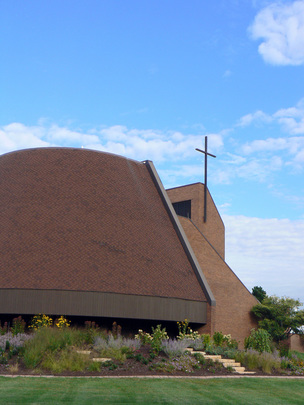 At a special service on November 23rd, 1980 our building was dedicated to God “As a place where the lambs of the flock of Christ may be fed, where little children may increase in wisdom and favor with God and man, where the young may be taught to remember their Creator in the days of their youth, where a generation may grow up fit for citizenship on earth and in heaven with Thee.” Biblically speaking a symbolic generation is 40 years. Israel wandered 40 years so that the generation that left Egypt would not be the same generation that entered the Promised Land. So if we apply that symbolism to St. Paul’s we have to say that this building has almost served the purpose for which it was dedicated, to be a place “where a generation may grow up…” If you were born the day this building was dedicated, then you are almost 36 years old right now, and hopefully through our ministry you have grown in favor with God and man and been made fit for citizenship in the world and in the kingdom of God. And hopefully that means that you desire to pass on the Gospel to future generations just like the 36-year-olds around here back in 1980 did. We are the people to whom this building was dedicated. We are the inheritors, the receivers, the fulfillment of all the prayers and the hard work, the vision those people had in mind. Time marches on. Today, with those 40 years almost up, we have several options. I suppose we could shut down the ministry of St. Paul’s altogether and say our work is done. But no Christian would seriously consider not feeding the next generation with the Gospel. We could relocate St. Paul’s somewhere else and build a new building like the people a generation ago did. That hardly seems like a desirable idea, but it is possible, I guess. We can keep milking the generosity and hard work of our forebears for as many more years as the building they built for us holds out without our doing anything and then shut everything down, but that would not only be ungrateful of us but extremely bad stewardship. Or we can step up to the plate like they did and make a decision with a view toward 40 years from now in mind. The heating units that were brand spanking new on Nov. 23, 1980 are also almost 36 years old. Buildings, wiring, plumbing, furnaces—they all age. You have to constantly maintain them just to keep them the same as they were. The blessings of a nearly 70,000 square foot facility come with responsibilities. We need to replace the HVAC system in the school with newer, more efficient, and A/C capable units if anyone is going to be nurtured on the Gospel here 40 years from now. And not only do buildings age, but standards change. Back in 1980 the houses around our church were all the very latest architecture. Today we are far more conscious of the needs of the elderly and most people think tri-level homes have too many stairs for some people to live in comfortably. If our subdivision were being built today the houses would look very different. What is true of home architecture is true of institutions. Not only have we tried to reduce steps, we’ve tried to facilitate easily getting dropped off and picked up. Newer buildings, especially those that serve the elderly, tend to have a covered drop off/pick up area where people who move slowly can get from the car to the building without being out in the rain and snow. In 2017, the 500th anniversary of the Reformation, we hope to begin the process of rededicating St. Paul’s Lutheran Church and School. The Parish Planning Council has already begun looking into ways to bring this about. It will require a lot of planning, a lot of dedication of time, talents and treasure, and a vision of how we will hand off this ministry to the next generation. This rededication will hopefully address the aging of the building and the changing of the standards in our society around us, and will also take up ideas and suggestions that come from anyone in the congregation, so be sure to attend the meetings, read the newsletters, and give feedback to your deacon or to the staff as things progress. What we want to be able to do here at St. Paul’s is join in the prayers of those who gave us this place and at the dedication of it said, “O Lord, the God of our fathers, by whose works of love in past generations You have richly blessed us, grant that our works may prove a blessing to our children in generations still to come.” 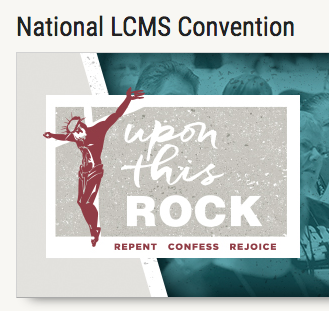 This summer our national church body, the Lutheran Church- Missouri Synod (LCMS) is holding its triennial convention in Milwaukee. Since St. Paul’s has a lot of members who are relatively new to Lutheran- ism generally and the LCMS in particular, this is a good time to explain a little bit about how our denomination is structured. We aren’t the only or even the biggest Lutheran church in the United States. The Evangelical Lutheran Church in America is larger and much more theologically liberal. We’re the second largest and are considered more conservative because we insist that the Bible is the inerrant, inspired Word of God. There are also lots of much smaller synods, most notably the Wisconsin Synod, which is also very conservative, and North American Lutheran Church, which is fairly new and small and tries to occupy a moderate position between the ELCA and LCMS. But in general most Lutherans in the U.S. belong to either the ELCA or the LCMS. The Missouri Synod* has about 6,000 congregations nationwide, with a little over two million total members. Our headquarters is in St. Louis and the current Synodical President is Rev. Matthew Harrison. The Synodical President gets elected every three years, so President Harrison is up for re-election this summer, though there are some other people on the ballot, too. The synod is divided into 35 districts. Ours is the Indiana District (which includes part of Kentucky) and has 237 congregations and headquarters in Fort Wayne. Our District President is Rev. Daniel May. Each District is then divided into Circuits of 6-14 congregations. Seeing as we are in the very corner of the state, ours is Circuit 1 and includes the western half of Lake County. So our circuit includes Trinity and Concordia in Hammond, Redeemer in Highland, Peace in Schererville, Grace in Dyer, and Trinity in Lowell. Each circuit has a Circuit Visitor who oversees pastoral vacancies and calls, handles any conflicts or concerns that might come up between members of different congregations, and organizes the election of delegates to the national convention. Our Circuit Visitor is our own Pastor Emeritus, Rev. Eric Stumpf. The voters at the convention every three years are elected by each circuit. Every circuit sends one pas- tor and one layperson as voting delegates, but they can’t be from the same congregation. This year our own Bob Jensen will be our circuit’s lay delegate and Pastor Kleinschmidt from Redeemer Lutheran in Highland is our pastoral delegate. Our synod operates a publishing company (Concordia Publishing House, or just CPH, which is where we get things like our hymnals and catechisms), two seminaries for the training of pastors, one in St. Louis and one in Ft. Wayne, ten colleges and universities scattered around the country (all called Concordia as well), and oversees many missionaries serving in other countries, sponsors chaplains in the U.S. military, and puts together social statements on various contemporary issues. So there is always plenty for the delegates to vote about. This fall we’ll report in the newsletter about whatever the convention in Milwaukee decided. If you have any questions about our national church body, how we’re different from the ELCA, or would like to get more information about all the things we as a church body do and how you can be involved, please feel free to talk to either of the pastors. *Yes, it is a goofy name. The denomination was officially incorporated by immigrants in 1847 as The German Evangelical Lutheran Synod of Missouri, Ohio and Other States, but since that is a mouthful in any language everyone just called it the Missouri Synod. So at the 100th anniversary convention in 1947 they officially changed the name to the Lutheran Church—Missouri Synod. Every convention there is a proposal to change the name of the synod to something less confusing to outsiders, but every year it gets voted down because everyone is so used to it. 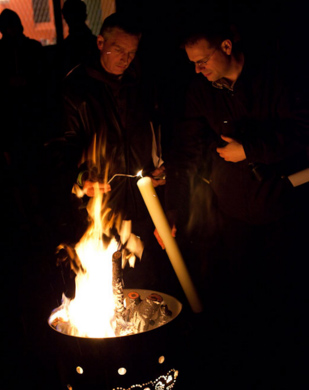 Some of your best memories of church services have probably been services that weren’t the normal Sunday morning service. Singing on Christmas Eve (even at the midnight services), getting up while it was still dark for the “sunrise services” in the wee hours of Easter morning, hearing the words “Remember that you are dust and to dust you shall return” as the ashes are applied on Ash Wednesday, listening in the darkness as the psalm is chanted and the altar stripped at the end of Maundy Thursday services—these tend to be very memorable services that aren’t at the normal time of weekly worship. It gets harder and harder for these special services to compete with our convenience-dominated culture. People don’t want to stay up late, get up early, go out of their way, or otherwise change their schedule, much less do so with sleepy children. So in most (not all) churches, the late night Christmas Eve service is lightly attended if even still offered. Same with Christmas Day. At Easter the “sunrise service” has been moved to a more reasonable hour and is not packed like the later services. And special services for high feast days like Epiphany, Ascension, Reformation and All Saints very often just get moved to the closest Sunday so they can be celebrated without inconveniencing anyone. So it might come as a surprise to us that for many centuries the most important church service of the year was the Easter Vigil, which, as the name implies, lasted hours and hours through the night and ended with the Easter proclamation and communion at dawn. This was (and is in many places) the service in which all the adult catechumens (converts to Christianity who had been taught the faith over the course of the year) were baptized, received into membership, and took their first communion. Most places do not really keep vigil through the night but celebrate the service either Saturday night or Easter Sunday very early. This year were are going to have an Easter Vigil service here at St. Paul’s at 8:00 p.m. on the Saturday night before Easter Sunday. I encourage you to attend because it is one of those special services that make an impression. No, it won’t go all night. In fact, it will only be the first half of the service, and the 7:00 a.m. Easter service will complete it. The service begins outside with the lighting of a paschal candle (“Paschal” is from the old word for Passover and in church usage just means “Easter-related” because at Easter we celebrate that we have passed over from death to life) from a small bonfire, which in our case will be in the courtyard. The worshippers light their own candles from the paschal candle and go into the darkened sanctuary, with their candlelight symbolizing faith in God’s promises in a fallen world. Various Old Testament readings and musical responses recount God’s faithfulness through all of human history. We then remember our own baptism and crossing over from dark to light, from death to life in the victory of Jesus Christ over sin, death, and hell. Normally the service goes straight into the Easter proclamation and communion service, but we are going to leave the church in silence and resume Easter morning with the great celebration. Please consider changing up your Easter weekend routine to join us for this very solemn and meaningful service. Most people who do it once find that it quickly becomes one of their favorite services of the year. 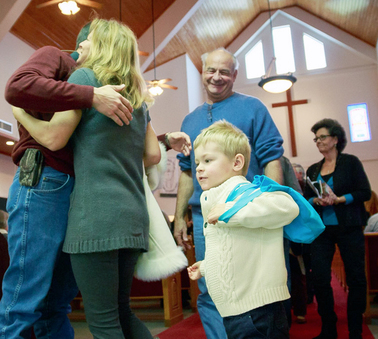 Church attendance nationally is down, and not just by a little bit. It is as though in the last fifteen years our culture has just collectively decided that going to church on Sunday is not a "thing" anymore. And what is true for our nation is certainly true for us here at St. Paul’s. In 2001 our average weekly attendance was 822. In 2015 the average was 463. But trends are not fate. While our societal trends are not really in our control except to the degree we participate in them, we can still focus on what we can influence, which starts with ourselves. Most of the drop in attendance here at St. Paul’s is not because people have quit church altogether but because they have stopped attending regularly. Many people who used to be here every week now come once or twice a month. People who used to come every other week now come a few times a year. We have stopped taking it for granted that our week ought to begin with first things first by attending church and starting thinking of it more like a commodity, something to do when we really feel a need for it or when it is convenient. What was formerly a "given" has turned into an option. The New Testament tells Christians not to stop meeting together. Apparently some of the earliest Christians had already begun skipping regular worship under the mistaken impression that “going to church” didn’t matter for them as long as they had faith. But that misses most of the point about attendance. The key word is “together,” which means that you not only benefit from the presence of other people as you sing, pray, and hear the Word, but your presence also benefits them. When you decide to skip church, you aren’t only deciding for yourself that you can do without Word and Sacrament ministry and the mutual consolation of the brethren for a week. You’re also unilaterally declaring that everyone else can do just fine without you there. And you are wrong. The indelible impression on young minds of seeing widows and newlyweds, trouble-makers and respectable folk, black and white, rich and poor, young and old all singing and praying together can never happen if most of those people don’t show up. When you stay home because your toddler is such a hassle, you aren’t only making your morning more manageable. You’re also declaring that the 90 year old who sometimes sits behind you shall not have your toddler to smile at and thereby have his faith in the future of God’s promises reinforced. When you as a twenty-something stay home from church because Sunday is the day you sleep in and you don’t feel like you get much out of church anyway because you already learned it all in Sunday school, you’re not only getting extra sleep for yourself. You’re also depriving some other twentysomething visitor, who never did learn it all in Sunday school, and who is nervous and uncomfortable in church, of the assurance your presence might have given that this strange place is a place for them, too. When you as a middle-aged man skip church, you’re not only (mistakenly) reasoning that you have more important places to be, but you are robbing some fatherless teenage boy whose mom made him go to church that morning of the example your presence in worship might have given. When you stay home because you’re too embarrassed to use the wheelchair, you are robbing your church family of the comfort of seeing that growing old gracefully is possible, and that should the day ever come from them to be a wheelchair, their church would welcome them as it welcomes you. No matter who you are or what your situation is, when it says in Hebrews not to stop meeting together, God isn’t just telling you that you will be blessed if you go to church. He is also telling you are a blessing to the others there whether you know it or not. Don’t selfishly rob everyone else of the blessing God wants to give them through your voice, your problems, your prayers, and your presence with them in worship. 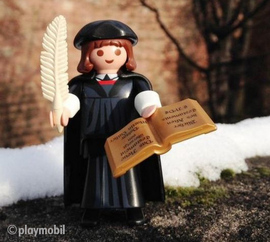 Remember all the hype around Y2K? All kinds of people thought that computer glitches would threaten civilization. My brother was locked in at LTV Steel that night to be there in case emergency measures were called for needed his engineering expertise. Or perhaps you remember when the ancient Mayan calendar ran out of numbers, briefly popularizing the idea that the end of the world was nigh. People have always been fascinated by such major calendar events. Even if you’re not a conspiracy theorist or Da Vinci Code type of kook, major anniversaries make you think. Another such big anniversary is coming. October marks the 499th year since the traditional date for the beginning of the Reformation, when Martin Luther posted his 95 Theses (theological statements he was willing to publicly debate) in Wittenberg, Germany. That’s one short of the Big 500, but that just gives us time to really think about the significance of that time span and prepare for how we want to acknowledge it. We are St. Paul’s Lutheran Church and School. If the people who fought and died for the right to teach salvation by grace through faith in Jesus Christ could leap ahead 500 years and see us today, what would they think? In what ways would they say their sacrifice was worth it, and in what ways would they expect better of us? It is an interesting thing to ponder because we have a whole year to work on it. They fought for getting the Bible into languages the common people could read and for getting copies of the Bible into their hands. Do we view that as a precious enough birthright to actually take advantage of? Or do we treat regular Bible study in the home and in church as something we can live just as well without? They fought for the Gospel of free forgiveness proclaimed in the name of Jesus to penitent sinners. Do we treasure that Gospel or take it for granted and view it as a superfluous part of our week amid all the more important things we have going on? They viewed sound Christian teaching as something worth being martyred for. Do we hold fast to the truth, or do we treat doctrine as no big deal? Much has changed since 1517. The Roman Catholic Church has changed greatly, adopting many of the positions enumerated in the Augsburg Confession. We don’t need our 500th anniversary to be some sort of “in-your-face” to Catholics. But we do need to dedicate ourselves to receiving and passing down the Gospel. We don’t know, of course, whether there will be another 500 years of history, but if there is, we want there to be another 500 years of people proclaiming and believing the Gospel message here at St. Paul’s, and we are a critical link in that chain. Let the one year lead-up to the 500th anniversary of the Reformation be for you personally and for all of us at St. Paul’s a chance to think about how we can best be the faithful recipients of the of the faith once handed down and the faithful forefathers of some future people who will look back at us 500 years from now, God-willing, and thank Him that they received the faith through us. |
AuthorRev. Peter Speckhard, Senior Pastor at St. Paul's Ev. Lutheran Church, Munster, Indiana Archives
February 2021
Topics
All
|

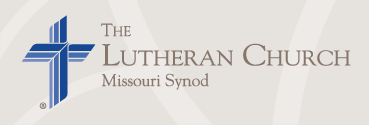
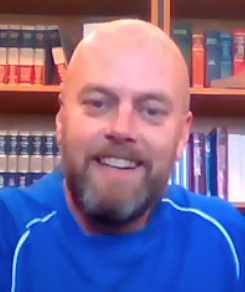
 RSS Feed
RSS Feed